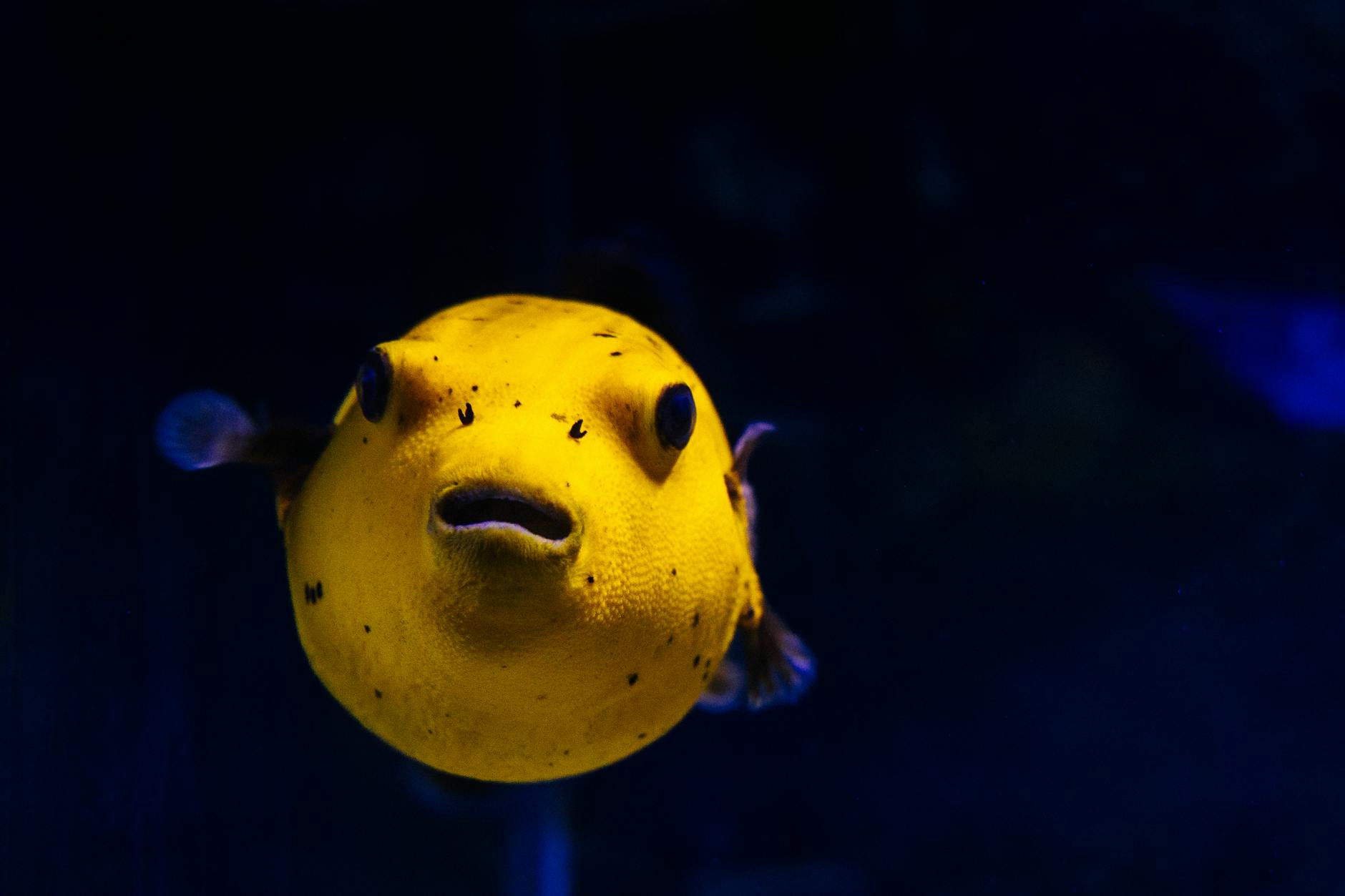
When you think of puffer fish, you probably picture a round, spiky balloon of a fish inflating in self-defense. But there’s a lot more to these quirky marine creatures than their comical appearance. Found in warm and temperate waters around the globe, puffer fish—or blowfish, as they’re sometimes called—are a fascinating blend of artistry, biology, and danger.
Inflate to Survive
The puffer fish’s most famous trait is its ability to puff up. When threatened, a puffer quickly gulps water (or air, if out of water) to expand its elastic stomach, turning itself into a ball several times its normal size. This transformation makes it harder for predators to swallow, and in some species, it also reveals sharp spines that add another layer of defense.
A Toxic Warning
Most puffer fish species also harbor a deadly toxin called tetrodotoxin—one of the most potent neurotoxins known to science. This poison is found mainly in their liver, skin, and other internal organs. It’s lethal to many predators and thousands of times more toxic than cyanide. In fact, a single puffer fish contains enough toxin to kill several humans. Despite the danger, puffer fish are considered a delicacy in Japan (called fugu), where chefs undergo years of rigorous training to safely prepare them.
Underwater Artists: Males That Carve Sand Mandalas
One of the most astonishing—and lesser-known—features of puffer fish behavior is their underwater courtship art.
In the waters around Japan, a species of small male puffer fish (Torquigener albomaculosus) engages in a unique and mesmerizing mating ritual: it creates intricate, circular patterns in the sand—sometimes over 6 feet (2 meters) wide! These geometric “sand mandalas” feature ripples, ridges, and symmetrical spokes radiating from a central point. The male flaps his fins tirelessly for days to sculpt the perfect pattern.
Why go to all this trouble? These underwater masterpieces serve two purposes: they attract females and provide a safe place for the eggs. A female puffer will inspect several designs before choosing a mate. Once she lays her eggs in the center of the pattern, the male guards them until they hatch.
The precision and complexity of these nests are so impressive that they weren’t discovered until the 1990s—and scientists didn’t know which species was responsible until 2012.
A Quirky and Complex Fish
With their strange mix of puffing defense, deadly poison, and hidden artistic flair, puffer fish are truly one of the ocean’s most surprising creatures. They’re a perfect example of how much mystery still lies beneath the waves—and a reminder that even the most cartoonish-looking fish can be full of surprises.
Did You Know?
- Some puffer fish can live in freshwater, not just saltwater.
- Puffer fish teeth fuse together to form a beak strong enough to crack shellfish and crustaceans.
- Their eyes can move independently, giving them a wide field of view.
Stay curious—there’s always more to explore beneath the surface.
More photos below ↓







Disclaimer: This blog post is for edutainment purposes only and may not be entirely accurate.






